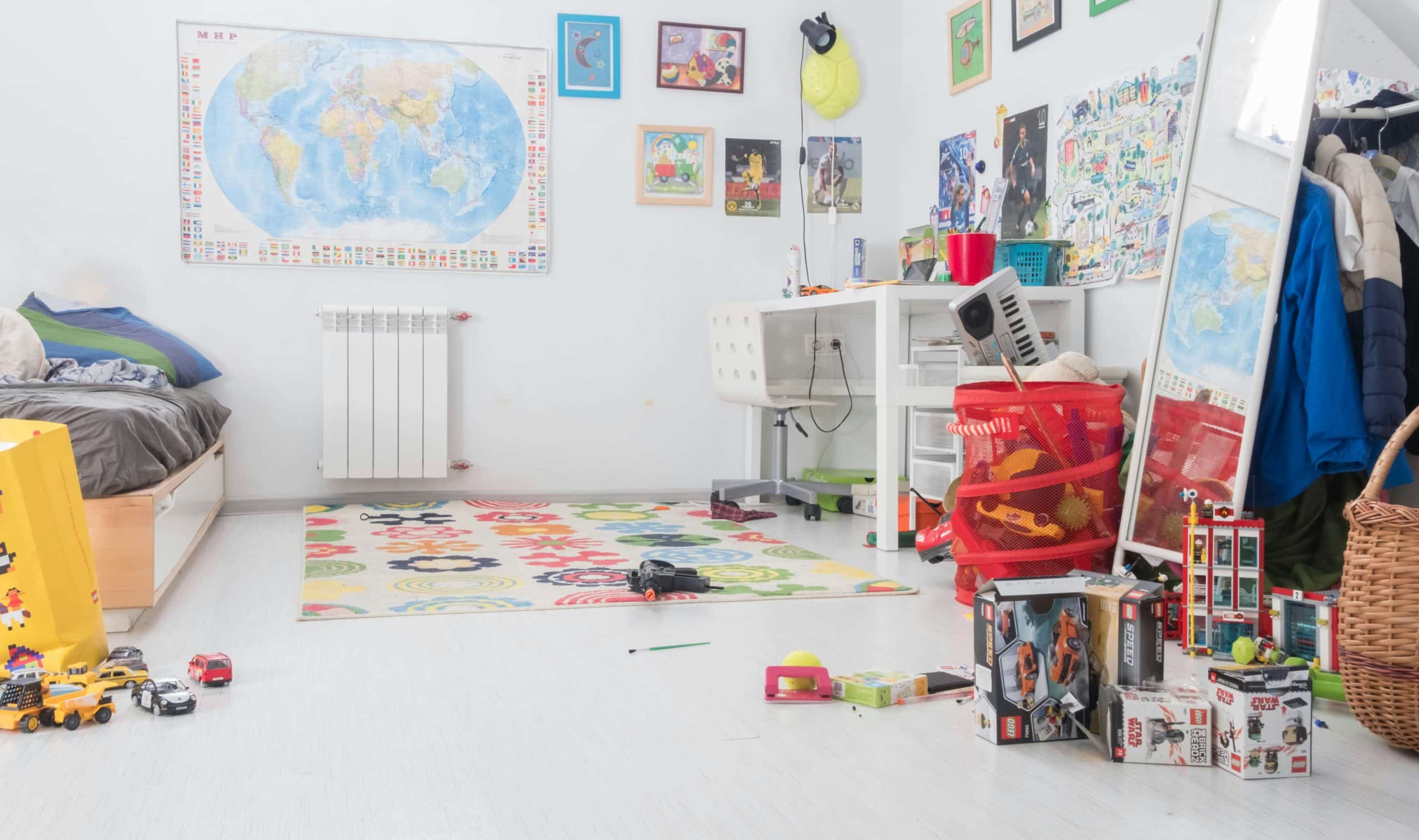Kids’ room makeovers: fun and functional design ideas

Walking into your kid’s room might often feel like stepping into a hurricane’s aftermath, with toys strewn about and clothes flung in random corners. Perhaps the room’s design no longer aligns with your child’s evolving taste. A kids’ room makeover can make all the difference. It infuses the space with a fresh wave of excitement and functionality, while keeping in mind your child’s personality and personal preferences. Let’s explore some fun and functional design ideas to transform your kid’s bedroom into a place where they love to spend time.
Reimagining the Space: How to Use Design to Create a Kid-Friendly Bedroom
Before diving headlong into the transformation process, it’s vital to understand the room’s potential and plan accordingly.
Lire également : Outdoor lighting: creating ambiance in your garden and patio
A bedroom isn’t just a place where kids sleep. It is their sanctuary, their play area, and study space. Therefore, the room’s design should be versatile and cater to all these needs. It’s essential to keep the décor playful yet sophisticated, so it doesn’t outgrow your child’s age quickly.
Start with a neutral base. Opt for soft shades for the walls that lend an airy feel to the room. Light colors like off-white, light gray, or pastels make the room appear spacious and bright. You can always liven up the space with vibrant furniture and accessories. Avoid overdoing the theme. Cartoon characters or superheroes might be your kid’s current favorites, but children’s preferences change rapidly.
A lire en complément : Advanced home security: technologies for peace of mind
The Bed: More Than Just a Place to Sleep
The bed is a focal point in any bedroom, and kids’ bedrooms are no exception. But in a kid’s room, the bed can offer much more than just a place to sleep. It can be a space for storage, a study area, or even a play zone.
Opt for beds with built-in storage to keep toys, books, and clothes. You could select a loft bed with a desk underneath, effectively using vertical space and providing your child a dedicated study area. Alternatively, you could go for a trundle bed if your kid often has sleepovers.
Make sure the bed complements the room’s overall design. If you have a small room, consider a bed that can be folded up against the wall when not in use.
Wall Decors: Reflecting the Child’s Personality on the Walls
The walls are an excellent canvas to showcase your child’s personality. Creative use of wall space can add character to your child’s bedroom, making it more engaging.
Wall decals are a great way to spruce up the room. They are easy to install and replace, offering the flexibility to change the room’s look as your child grows. From trees and animals for younger kids to more sophisticated patterns for older ones, the options are endless.
Don’t forget about wall shelves. They are functional and add to the room’s aesthetics. Use them to display your child’s favorite toys or books or use them as storage space.
Smart Storage Solutions: Keeping Clutter at Bay
No matter how big the room is, there never seems to be enough storage space in a child’s bedroom. This section will explore some smart storage solutions that not only aid in keeping the room tidy but also add to its overall aesthetic appeal.
Under-bed storage and beds with storage drawers are lifesavers when it comes to stashing away toys and clothes. When selecting storage furniture, consider pieces with doors or drawers to hide clutter and keep the room looking neat.
Custom-built shelves around the room or over the bed can also provide extra storage space. Remember, storage doesn’t have to be boring. Paint the shelves in bright colors or use decorative storage boxes to add an element of fun.
The Fun Element: Incorporating Playful Elements in the Design
The last thing you want is for your child’s room to look like a boring, grown-up space. It’s their personal space, so it’s crucial to incorporate elements of fun.
You could dedicate a corner of the room for play. This could be a small teepee, a mini kitchen set, or a reading nook with a comfy chair and a bookshelf. Wall-mounted pegboards or magnetic boards can provide an interactive play zone.
Finally, remember to involve your child in the design process. After all, it’s their room. Their input will not only ensure that they love their new room, but it will also make them feel valued and included.
Incorporating a Study Zone: A Place to Focus and Create
A vital aspect of any kid’s room makeover is creating a designated study zone. This doesn’t merely refer to a place for schoolwork. It should be a space that encourages creativity, innovation, and a love for learning.
The study zone should be away from distractions, preferably near a window for natural light. A well-lit area not only supports your child’s visual comfort but also boosts their mood and productivity. You can also add a desk lamp for late-night reading or creating art.
Choose a desk with multiple storage options. Having separate compartments for books, stationery, and craft supplies will help your child stay organized. Opt for adjustable desks and chairs that can grow with your kid, ensuring comfort and correct posture.
You can make the study zone visually appealing by placing a corkboard or a magnetic board above the desk. It can serve as a place for your kid to display their artwork or pin important notes. Again, the image credit goes to flexibility, allowing your child to personalize their space.
Remember that the study zone doesn’t have to be strictly academic. If your child is into painting or crafts, incorporate storage solutions like hanging buckets or pegboards to hold their art supplies.
Harmonious Color Palette and Lighting: Setting the Tone in the Room
The color palette and lighting play a crucial role in setting the tone and mood of the kids’ room. The right blend can make the room warm, inviting and stimulate your child’s senses.
When choosing the color palette, don’t be afraid to experiment with bold and bright colors. However, it’s wise to stick to a harmonious blend. If your child’s favorite color is bright orange, for example, consider using it as an accent color against a more neutral backdrop.
Lighting is another critical aspect of interior design. Make sure the room has plenty of natural light during the day. For the evening, consider layering the lighting. A bright ceiling light for overall illumination, a desk lamp for focused tasks, and a soft nightlight can create a soothing and functional environment.
If you’re working with a small kids room, using mirrors can help create the illusion of space. Similarly, light colors and clever use of lighting can make a tiny room appear larger.
Conclusion
Redesigning your kids’ bedroom might seem daunting initially, but with careful consideration and a dash of creativity, it can be an exciting venture. From the bed to the walls, each element in your kid’s room offers potential for functionality and fun.
Consider the current and future needs of your child and let that guide your room design. Remember, the room should be as dynamic as your child, ready to evolve with them.
By making smart design choices and involving your child in the process, you’ll not only create a room they adore but also a space that nurtures their personality and passions. And who knows, you might just earn yourself the "Parent of the Year" title in the process! So dive in, have fun, and let your imagination take the wheel.
